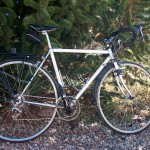
[If you are a lover of old Vitus frames stop reading now! ]
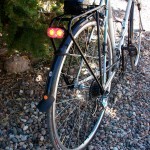

[If you are a lover of old Vitus frames stop reading now! ]

Just getting around to posting my final notes about the 2009 Tejas 500.
Lights
At the request of my crew, I ordered a couple more batteries and chargers before the race. Rob at DiNotte knew I’d had problems mounting my 600L on my road bike with aero bars and called when he got my order and offered to upgrade it to an 800L for about the same price. The 800L is awesome. Not that the 600L isn’t bright, heck I rode ROF with a 400L, but the 800L is amazing. I felt like I had to dim it for approaching vehicles. The new quick mount is much simplified and improved. Why anyone attempts a 24+ hour bike race that doesn’t allow following car support with cheap lights is beyond me, but there were several riders out there with nice bikes and poor lighting. I will and have raced on an old bike before I will race again with poor lights.
Because there was so much traffic on the course, (Honestly more traffic than anywhere I’ve ridden all year. I felt like I was riding on the freeway.) I left my 400L taillight on flash mode all day to help make myself more visible. I use it on almost all my training rides. As other cyclists have said, if a driver hits me at least I don’t want them to be able to say they didn’t see me.
For MTB racing I need a headlamp, but find it unnecessary on the road so to save weight on my neck I did not use a DiNotte on my helmet. Instead I installed a Knog Frog. It was perfect; enough light to see my HRM, bottle cages and drivetrain, with negligible weight. I know it sounds silly, but during the ROF I actually had problems getting my bottle back in the cage at night with only a handlebar mounted light. The disadvantage to this setup over using a DiNotte 200L or 400L on my helmet is no backup light. If my handlebar mounted light had failed I would have been left with the equivalent of a mini mag to limp home with.
Socks
Drymax sent me some socks to try at the first of 2009. At the time I thought I was going to be running more. That didn’t happen, but the mini-crew Sport and Sport Lite Mesh have become my all time favorite, hate-to-ride-without-them, road biking socks. I don’t sweat a lot so their moisture wicking capabilities aren’t as important to me. What I think is great is that they fit perfectly with no lumps or bumps. After several hours any imperfection in a sock will start to irritate my feet and I’ve had absolutely no issues since using Drymax.
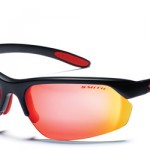
I’d won some Smith Optics Redline Max sunglasses earlier in 2009. Fashion-wise the red mirror lenses wouldn’t be something I would normally wear, but my other glasses were really hurting my ears so I tried the Smiths. Ah relief!! Much less pressure on my ears and they stayed in place better too. The super dark lenses were also a great relief for my eyes. Way to go Smith! Redline Max are probably the most comfortable pair of sunglasses I’ve ever owned. Now I just need some clear lenses so I can use them at night.
Coleman
I will never again underestimate the value of warm food during a long race. Jen used a Coleman stove at Targhee and ROF this year and my mid-night pasta and soup entrees were always warm. That made them much more palatable and rejuvenating. It was nearly impossible for my mom to keep any food hot using thermoses and a microwave in a 3rd floor hotel room a mile away.
Tent
I picked up a slightly used Hobitat 6 at the REI garage sale for 100 bucks. It was good to have a tent with plenty of room for sleeping, sitting and storing gear. It was so humid and cool at night that everything not in the tent was covered with water.
For the most part, I enjoyed the course. It was very well marked; no cue sheet required. Not only were turns marked, but so were large potholes and other road hazards. The pavement was also clean. It seemed that the director and/or volunteers had spent some time clearing gravel off the road. As I mentioned above, there was lots of traffic; especially Friday morning. We were riding on fairly narrow roads and it was not unusual to be passed, in either direction, by vehicles going 80-90mph. (My guess based on assumptions that most of the slower traffic was traveling close to the speed limit.) The drivers were very considerate. I think only one vehicle in 40+ hours did not give me at least half a lane when passing.
I did have one weird experience. A half-full can of beer was thrown at me from the patio of the Storiebook Cafe about 2am. Fortunately their aim was off. The Storiebook had live music earlier in the evening and a big sandwich sign out welcoming the TT riders so it was doubly strange to have that “greeting” from their patrons.
That’s it for 2009 races. I may do a brevet or two in New Mexico before the year is over, but mostly I’m just happy to be home for awhile.
Pacing, what pacing?
Things came together pretty well for me at this race. I went out “too fast” and kept up a pace I thought was “too fast” for most of the race. I had a couple of slower laps on Sunday morning. Then, as I started my final lap, hoping I could finish it off in less than 2 hours, I noticed that my legs were feeling a bit tired. I quickly forgot that and started worrying about the wind that had been picking up intensity all morning. I thought I better take advantage of the little tail wind early in the lap, and increased my effort. I’d started my last lap about 5 minutes before the 6 hour time trial. About 25 minutes into it the lead motorcycle and first rider caught me. I got continual encouragement as the 6 hour riders passed and was motivated to keep them in my sights as long as I could. Before I knew it I was “sprinting” for the finish line with a lap time of 1:38, only four minutes slower than my first lap.
Sleep is a powerful motivator
I don’t have a good plan for events that start a few hours before my bed time and I was feeling sleepy by the time the 6pm start rolled around. I learned that sleep is a good motivator for me. I promised myself three hours of sleep and a shower at the hotel if I finished the first 300 miles in less than 24 hours. It probably wasn’t good strategy for a 500 mile race, but my first objective was the 300 and the promise of sleep kept me focused for most of the first 24 hours.
I stopped for two more 45 min naps; one early Saturday morning and one early Sunday morning. Those were essential, I’m-unsafe-to-ride naps.
If you’re going to the trouble of bringing a second bike, it should really be ready to ride
When I returned from my four hour shower-nap break on Saturday night, I decided to check my tire pressure. I mentioned in my ROF report that I’ve started using tubeless road tires and for the most part I love them. However, I do not love having my valve cores unthread at 10pm on the second night of a 500 mile race…especially when I’m my own mechanic. When the valve core came loose on my back tire, it lost so much pressure that the sidewall unsealed from the rim. No amount of hand pumping was going to reseat the tire. I got the tire reseated with a CO2 cartridge, but then wasn’t confident of it holding air so I decided to take my old Vitus that I’d brought with fenders installed in case of rain. I took off the fenders and started moving lights over. As I was about finished I saw my “rain saddle” and cringed. By this time the tire on my RS had been holding air for close to 30 minutes so I moved everything back and just went out on it with a few extra CO2 cartridges in my jersey pockets. I’d been swinging my leg over my saddle saying, “see ya in a while,” when I decided to check the air pressure…45 minutes later I actually left for Lap 13.
Amazing volunteers
The Texas Time Trials had an amazing number of supportive, enthusiastic, cheering volunteers out on the course. Before the first lap was finished I was dumbfounded by the contribution these cyclists and cycling supporters were making to the event. At every major intersection there were volunteers pointing the way, checking traffic, and warning riders about road hazards. The volunteers’ enthusiasm was matched by the Race Director, Dan Driscoll. He made all the riders feel like their race was successful and their efforts appreciated.
The course was well marked. No route sheets or maps needed. There were reflective arrows painted on the road at turns, road hazards and large potholes were marked, there were also lots of blinking lights at all intersections. Comparing the road at the end of the race to the road on Thursday and Friday it appeared that a lot of time had been spent clearing road kill and gravel from the road fairly close to the Thursday, 6pm start time.
Besides the volunteers manning the intersections and timing table, there were also a number of people in vehicles and on motorcycles constantly sweeping the course. Though riders weren’t allowed crew on the course, a rider shouldn’t have had to wait more than 15-20 minutes if they had a problem. It was reassuring when I went out on my questionable tire to know that there were people checking the course regularly.
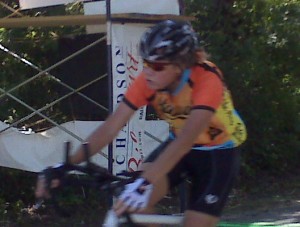
Tejas 500 Report (Part 1)
The Tejas 500 at the Texas Time Trials was a good end to my season. It was my third ultra cycling race in four weeks. I’d hoped that riding 24 Hours of Grand Targhee, followed two weeks later by the Ring of Fire 24 Hour Time Trial, and finishing up with the Tejas 500 would be a good challenge and good peaking; each event building on the last. After ROF, I questioned even trying the Tejas 500 this year. I didn’t feel like I’d had another 200 miles in me. I e-mailed the Texas Time Trials race director, Dan Driscoll, with questions about late entry and before I knew it my application was in the mail. I’m glad I did it. It didn’t seem much harder to ride 500 than 300, but I am ready for a break now, with maybe with a couple of New Mexico brevets before the end of the year.
I completed several of my goals for the year. Two big ones were 1) riding 300 or more miles in 24 hours, I did 318 in 23:24 with a 45 min nap; and 2) completing 400+ mile road ride. There were three women in the 500. I was second at 43:31. First place was Lynn Lashley, 42:07; Third Heidi von Teitenberg, 47:05.
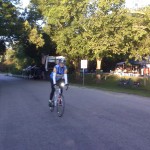
My mom crewed for me and she was great! It was her first time to crew a bike event (though she had crewed me during a point-to-point training ride in June). It was my first 48 hour ride. I think it is very hard to crew a 48 hour event and when I’ve done it I’ve not been the only crew person so I was very worried about my mom trying to crew for 48 hours by herself. I kept asking her to go back to the hotel and get some real sleep, but she refused and was there for every lap, making sure my batteries were charged at night, and packing my bottles full of ice during the day, and reminding me to take Endurolytes, and apply sunscreen and Chamois Butt’r. One thing’s for sure, moms make the best peanut butter and jelly sandwiches!
Race report to be continued…